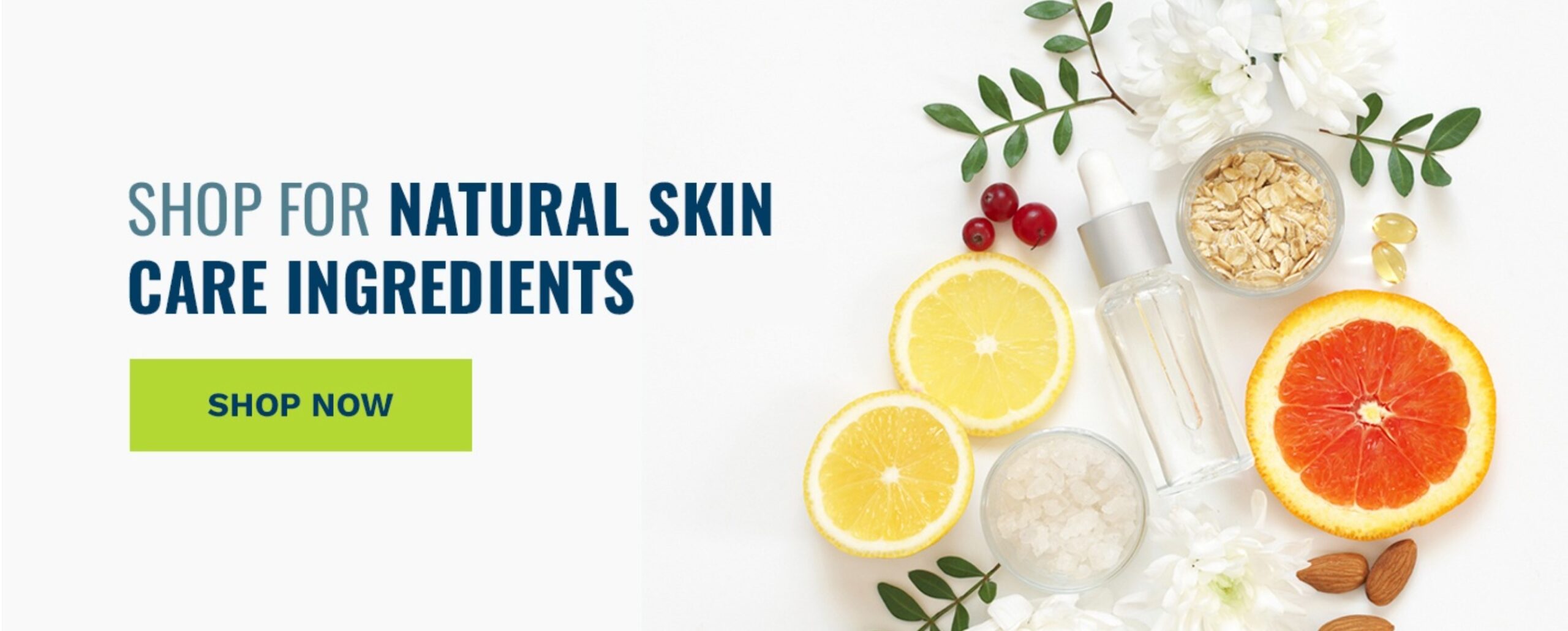Top Trends in the Skin Care Industry
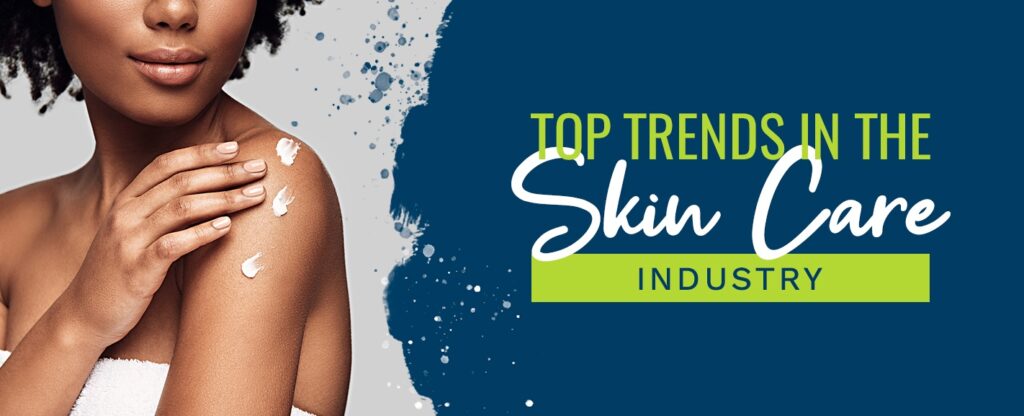
The skin care industry is booming and it’s no surprise why. Your skin is your body’s largest organ and shields your inner workings from the outside environment. Doing so comes at a cost though as your skin is exposed to UV rays, bacteria, air pollution and more. Caring for your skin helps ensure its long-term health and its ability to continue protecting you for years to come.
With skin care products contributing to 60% of the prestige beauty industry’s total gains in 2018, it’s safe to say that people are taking this fundamental practice seriously. Everyone is trying to figure out how to best care for their skin based on their individual concerns as well as variables such as budget and quality of ingredients. As everyone searches for that perfect skin care routine, some interesting trends have started to pop up. Here are the top skin care trends gaining popularity today.
1. Personalized Skin Care Trend
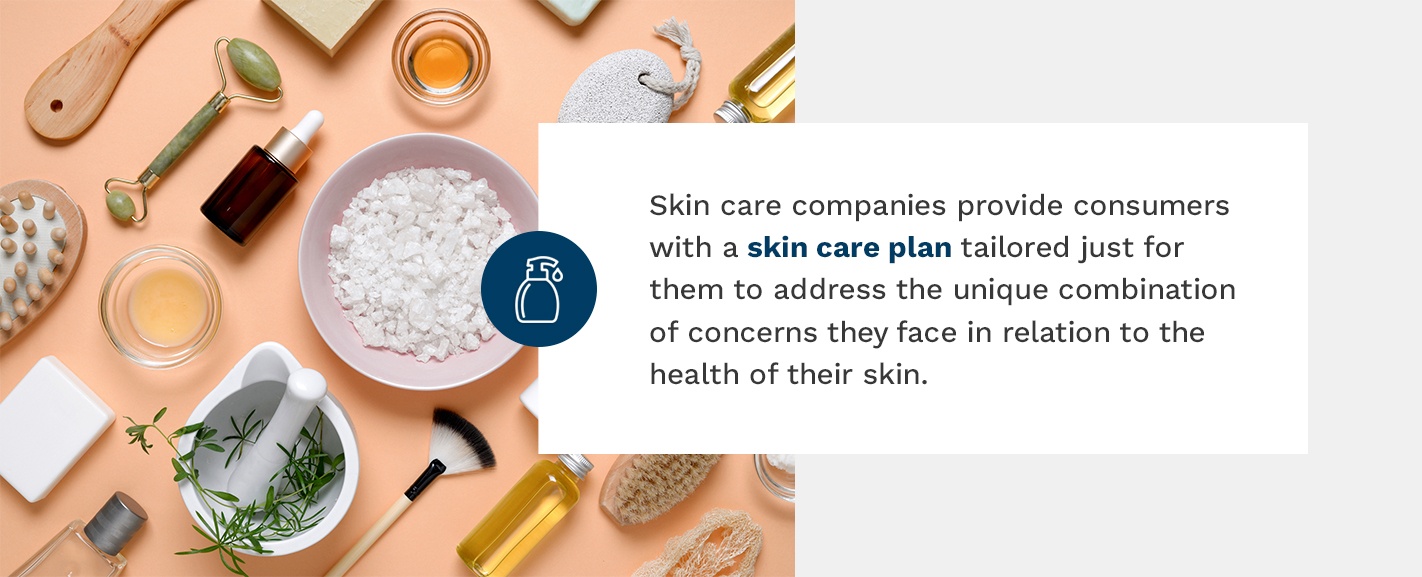
If you’ve tried to go into a store to pick out skin care products to suit your needs, you’ve probably been met with a wide range of products from a variety of brands. Each brand attempts to categorize its skin care products based on skin type using phrases like “combination skin”, “normal to dry” or “normal to oily.”
Is it really that simple though? Can you identify yourself as one of those skin types and have the associated products provide noticeable results in the quality of your skin? Personalized skin care companies would say no. Though many personalized skin care brands have popped up over the years, they serve the same main purpose — to provide consumers with a skin care plan tailored just for them to address the unique combination of concerns they face in relation to the health of their skin.
These services will generally have you fill out a survey to provide the company with key information that can determine what your skin care needs are. These factors could include:
- Age
- Gender
- Location
- Main skin concerns
- Skin sensitivity
- Water intake
- Stress levels
- Sleep habits
- Dietary habits
- Lifestyle habits
Depending on the service, this information will then either be run through an algorithm or viewed by a licensed esthetician to recommend skin care products or create custom skin care products just for you. Typically, if an esthetician will be reviewing your profile, they will ask you to include photos of your face taken from different angles, without makeup and in natural light.
Personalized skin care has also infiltrated the existing market as established brands begin to introduce customizable products within their usual lineup. These products typically consist of choosing formulas to add to a moisturizer or serum base to create a product that addresses your specific skin concerns. Other brands have come out with their own quizzes that provide you with suggestions of which products in their usual lineup are good choices for your skin type.
So why do they need all of this personal information about you? It all comes down to epigenetics. Epigenetics relates to the changes in gene activity that do not change a person’s DNA. For example, imagine a set of identical twins who have been raised in two completely different environments. One twin lives in a colder climate while the other twin lives in a warmer climate. One is vegan while the other doesn’t really monitor what they eat. One twin competes in triathlons while the other does mild workouts from time to time and works in front of a computer most of the day. Despite having identical DNA, these twins would look different from one another and have different physical characteristics from one another. That is due to epigenetics. Your surrounding environments, as well as the way you live your life, contribute to your physical characteristics. Though your genome doesn’t change over time, your epigenome does, and your epigenome is responsible for telling your genome which genes to express.
Epigenetics is important in relation to personalized skin care. Think of the number of different choices you make every day, as well as the many environmental factors you have no control over. Each person looking for skin care could have any combination of those factors that change which genes are expressed, and many of these choices affect your skin. The blue light from your computer screen, whether or not you smoke, the climate you live in, what you eat, how much sleep you get, the pollution levels in your city, how much water you drink and so much more contribute to the health of your skin and, in turn, the products you need to treat it.
2. “Skip Care” Skin Care Trend
You’ve undoubtedly heard the phrase, “Less is more.” Well, the same applies to this skin care trend that encourages consumers to use a select few, truly beneficial products as opposed to the extensive routine that has been the trend over the last few years. Interestingly enough, both this condensed skin care plan and the elaborate regimen originated from the same place — Korea. Korean skin care routines and products are often grouped together with Korean makeup under the umbrella term K-beauty. These products hit the U.S. market in 2011 and have only increased in popularity since.
The trend that juxtapositions “skip care” is typically referred to as the “10-step skin care routine” though the actual number of steps can range anywhere from seven to even 15 products. The steps generally associated with this routine typically include:
- Cleansing balm or oil
- Foaming cleanser
- Exfoliator
- Toner
- Essence
- Serum
- Sheet mask
- Eye cream
- Moisturizer
- Thicker cream at night or sunscreen in the morning
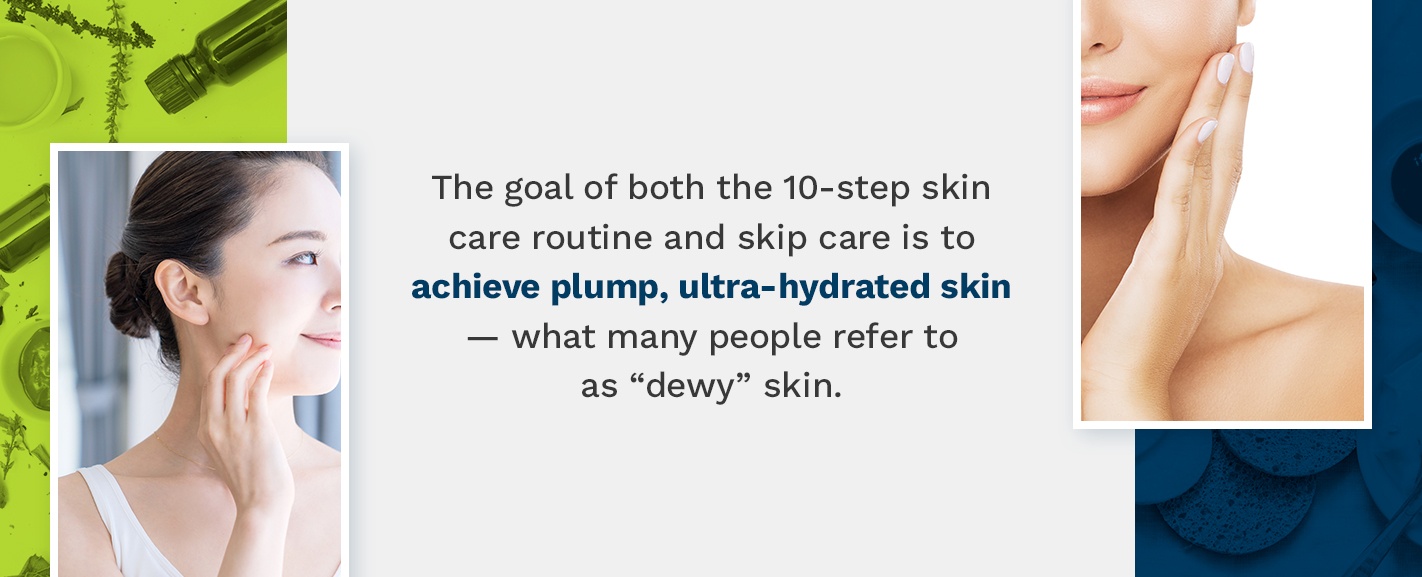
Certain steps such as the serum and essence can be doubled up to address multiple skin concerns, increasing the number of products needed to complete this routine. This trend became so popular that both Korean and American skin care companies started releasing full kits that include all these steps, providing convenience to the consumer so they wouldn’t have to source each product separately. Many of these kits are still on the market today as this trend is still widely popular. However, other people are abandoning this routine in favor of a more abbreviated option.
Skip care drastically contrasts the 10-step routine by encouraging consumers to create a skin care routine consisting of only three to four steps. The idea behind this new trend is that a shorter routine using a few effective products is equally beneficial for your skin and easier to maintain as it is less of a time commitment and — depending on what products you choose — more cost-effective. You also avoid the risk of combining ingredients that could cancel each other out or create a reaction that could lead to breakouts. The core steps involved in a skip care routine are:
- Cleansing
- Moisturizing
- Applying sunscreen
Outside of these three main steps, you could add in a serum or essence to tackle your top skin concern or use an exfoliator once a week. Don’t get crazy and add too many, though — the fewer steps, the more likely you are to keep up with the routine and the less likely you are to break out from a combination of different chemicals. To maximize the benefits of the skip care trend while still maintaining a simplified routine, many people are relying on multitasking products to get the job done.
Multitasking skin care products are exactly what the name suggests — products that serve multiple purposes. Some multitasking products work as a cleanser, toner and moisturizer all in one while others are moisturizers that contain serums. By combining some of the steps from the longer routine into multi-use products, you reap the benefits with less time commitment.
The goal of both the 10-step skin care routine and skip care is to achieve plump, ultra-hydrated skin — what many people refer to as “dewy” skin. In the end, it all comes down to preference. Some people still prefer the 10-step routine because taking the time to pamper themselves is just as important as the skin care routine itself. Others are constantly on the go and while the results of the 10-step routine excite them, the extra time commitment just doesn’t work for their schedules, making the skip care routine the optimal choice for them.
3. CBD Skin Care Trend
You’ve probably seen CBD products popping up over the past few years from CBD oil to CBD candies — these products have become popular among consumers of all kinds and the beauty industry is no different. In 2018, the Agriculture Improvement Act legalized the use of hemp-derived CBD as an ingredient nationwide. This created an influx of cannabis-inspired products that overwhelmed consumers with their variety of names and technical jargon. Many CBD skin care companies have arrived on the scene. Even established brands developed their own CBD product lines. There’s still some debate over the science behind CBD and its uses in skin care, but no one can deny the overwhelming success of this trend.
What is CBD?
CBD stands for cannabidiol. It’s a chemical found in the plant species cannabis sativa. Cannabis sativa contains more than 80 biologically active chemical compounds. Unlike tetrahydrocannabinol (THC) — the component most commonly associated with marijuana — CBD is not psychoactive. The form of CBD most commonly found in skin care products is derived from hemp, which the FDA classifies as cannabis and cannabis derivatives with no more than a 0.3% concentration of THC. Hemp produces more CBD than marijuana, making it the optimal choice for skin care products. One thing to watch for is hemp seed oil, which is different from CBD oil produced from hemp. Hemp seed oil, also called cannabis sativa seed oil, only produces trace amounts of CBD, so while its marketing may suggest it contains CBD, you may be paying a higher premium for a lower-cost ingredient.
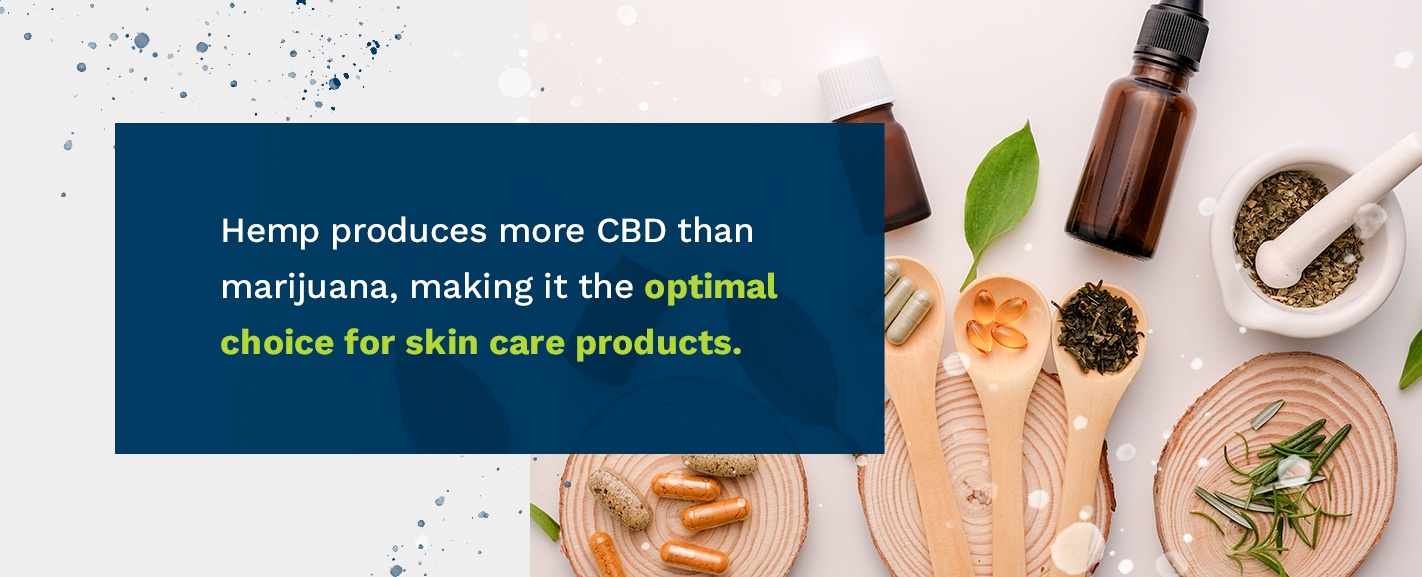
Products containing hemp-derived CBD are legal at the federal level but remain illegal in some states, whereas marijuana-derived CBD products are legal in certain states but remain illegal at the federal level. The FDA regulates all cannabis and cannabis-derived products.
What Skin Care Products Could Contain CBD
CBD can be found in a range of skin care products including:
- Face wash
- Moisturizer
- Face masks
- Serums
- Eye cream
- Acne patches
- Lip balm
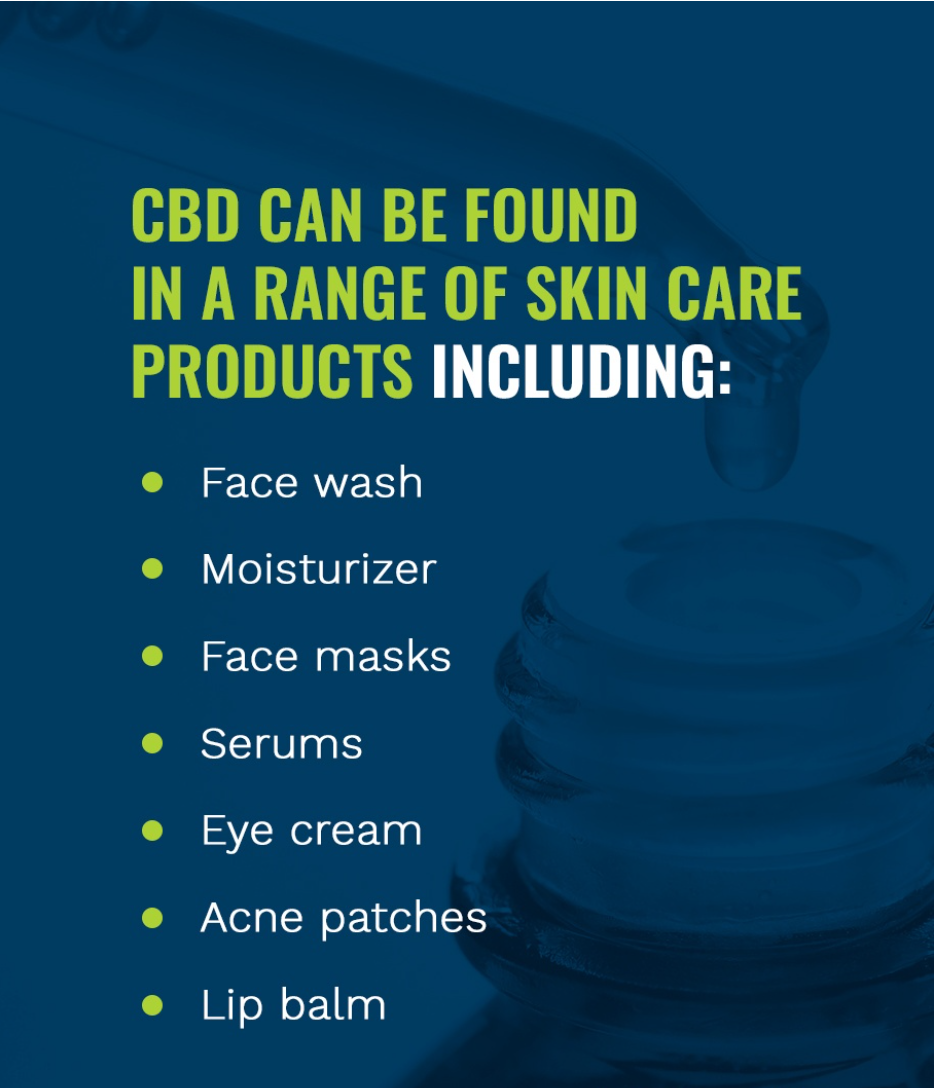
Keep an eye on product labels to determine if they contain hemp oil or hemp seed oil. While hemp can produce over 20% CBD, hemp seeds produce close to 0% CBD. True CBD will be listed in the ingredient list as full-spectrum hemp, phytocannabinoid-rich (PCR), PCR hemp or cannabidiol. Hemp seed oil will be listed as cannabis sativa seed oil. Price can also be a good indicator as CBD is more costly than hemp seed oil, though both contain anti-inflammatory properties. The effects of CBD and hemp seed oil are still being studied, but the results can vary from person to person. Make sure to do your research before you buy as brands are not obligated to divulge to consumers how much CBD is in their products.
What Are The Beneficial Claims of CBD in Skin Care?
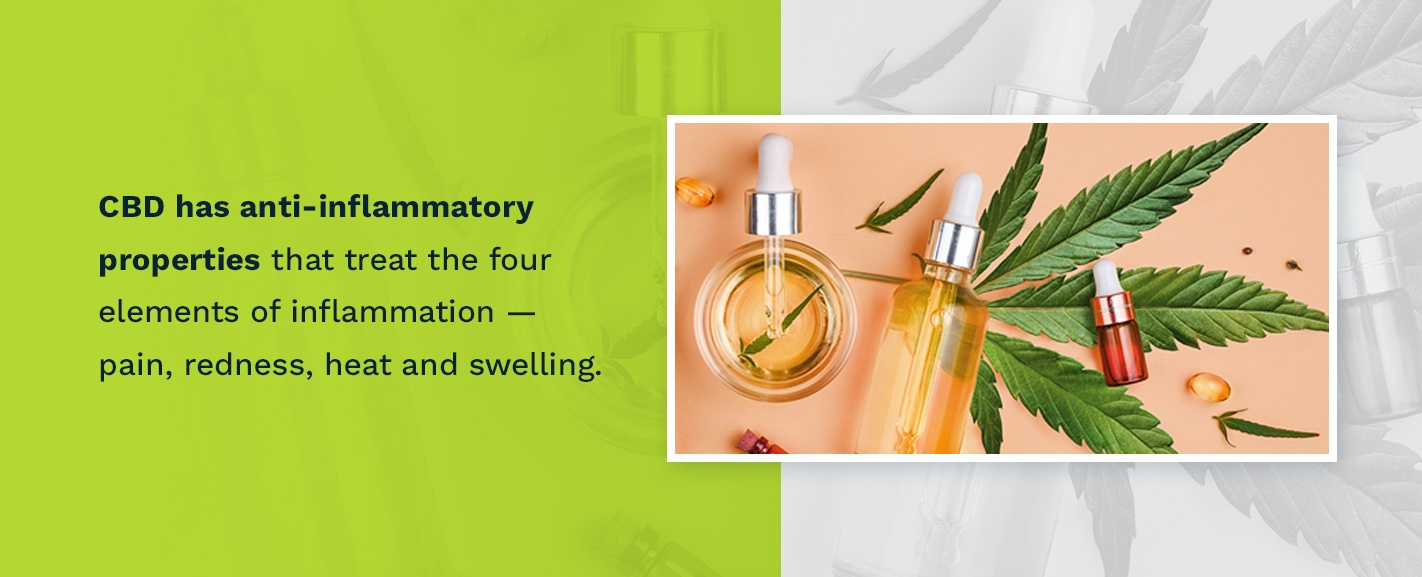
So why use CBD in skin care products? What are the supposed benefits? According to Dr. Jayne Reuben, a pharmacologist, CBD has anti-inflammatory properties that treat the four elements of inflammation — pain, redness, heat and swelling. Inflammation can cause acne in the pilosebaceous unit where the sebaceous gland and hair follicle reside. Up to 50 million Americans suffer from acne every year, making CBD an appealing solution for this common skin condition.
Outside of the realm of skin care, CBD can be taken as an over-the-counter supplement to treat mild anxiety and arthritis as it may have pain relief properties. The only FDA-approved prescription drug containing CBD is used to treat a severe form of epilepsy. There haven’t been enough human studies to determine the full scope of what CBD does and what it can be used for.
4. Technology in Skin Care
We live in an age of technology, and we are seeing the effects of technology on the trends in the skin care industry. Certain products can have a direct application in your skin care routine while others provide a more virtual experience. The aim of technology is to improve the lives of consumers and create an added level of ease in their daily lives, whether that be by managing and tracking data to help inform their decisions or by providing shortcuts that can temporarily boost confidence and facilitate change. As people continue to prioritize skin care both in their financial budget and how they budget their time, it only makes sense that new technology would be released to complement the skin care industry.
Smart Skin Care
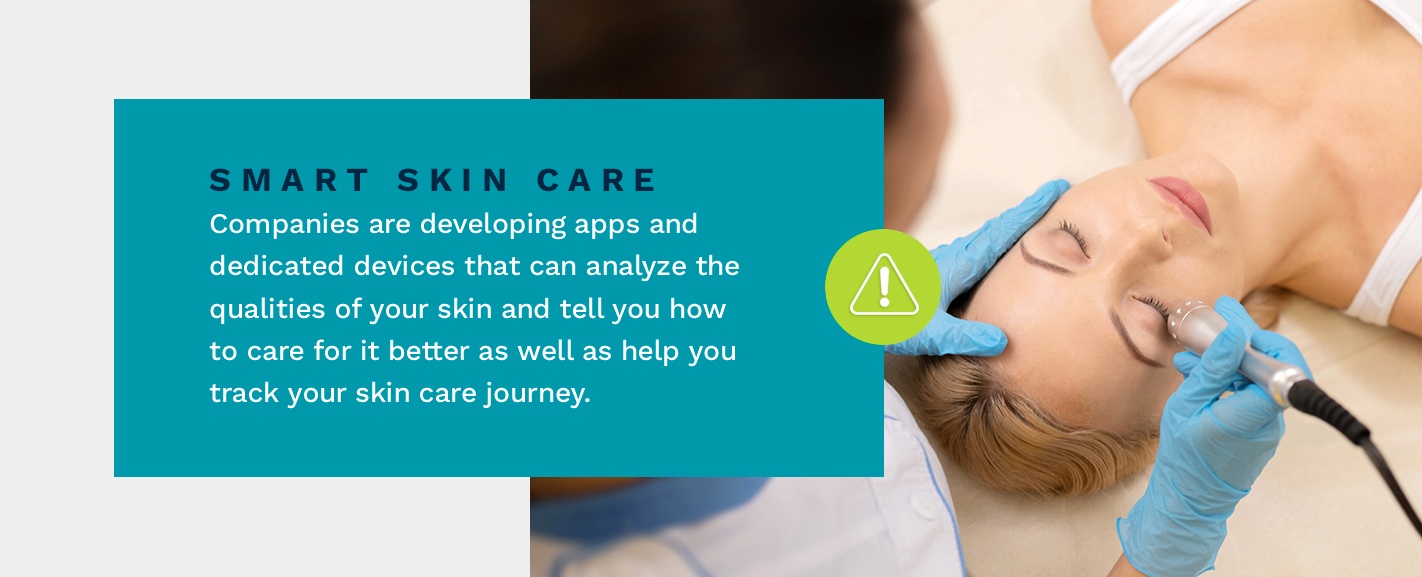
As people concern themselves more with the health of their skin, companies are developing apps and dedicated devices that can analyze the qualities of your skin and tell you how to care for it better as well as help you track your skin care journey. Some of these products do this by taking photos of your face each day and providing you with a time-lapse video so you can monitor your skin’s progress and how your skin responds to different products. You can then track the products you use to make it easier to repurchase the products that work and figure out which products don’t work. You can also use these devices as a sort of skin care diary to monitor what symptoms your skin experiences from one day to the next or how your skin changes throughout the seasons.
Other products claim to track your skin’s hydration levels using sensors on a dedicated device to provide you with a personalized skin care routine. They can then connect to an app on your phone to help you manage your routine. If you’re looking for a budget-friendly option, many free apps are available that help you track your skin care routine without the need for a dedicated device — all you need is a smartphone.
3D Printed Skin Care
In its standard applications, 3D printing uses plastic to transform a design from a computer program into a tangible object by printing it out layer by layer. In skin care, however, this form of additive production can be used to create face masks that target specific skin concerns in different zones of your face. This form of personalized skin care uses the aforementioned smart skin care to determine what issues need to be addressed in different areas of your face like your forehead, T-zone, eyes and cheeks.
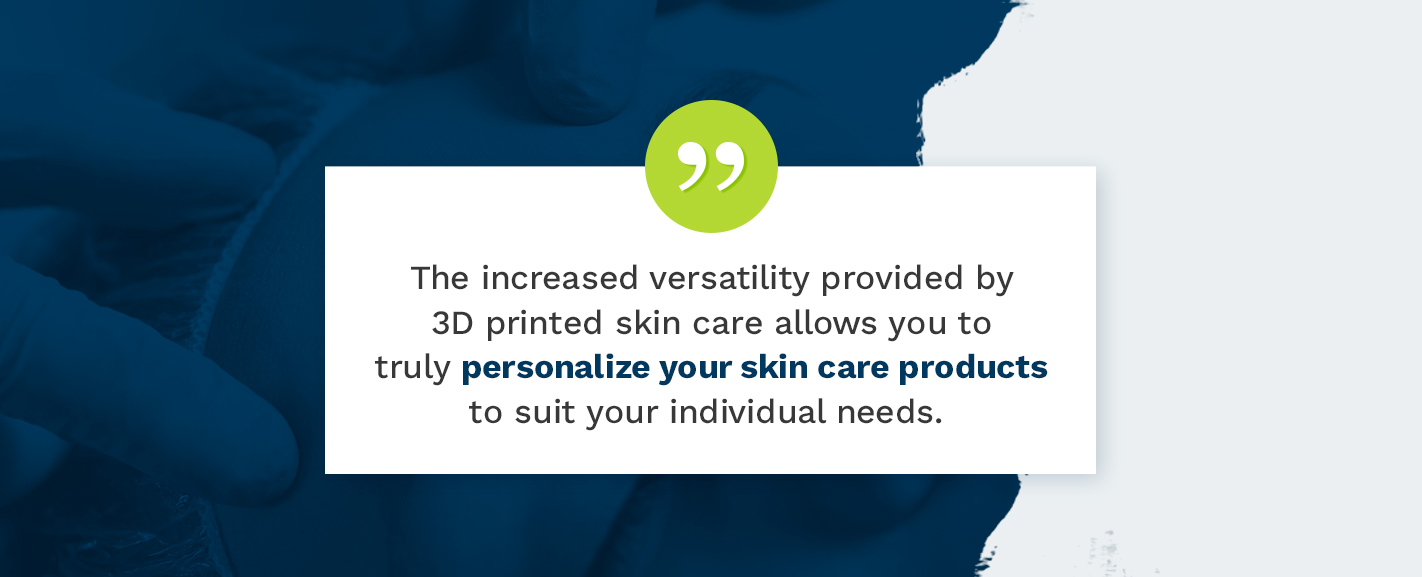
You can then order a face mask specifically designed for you. You may experience dry cheeks and forehead with an oily T-zone and eye area — face masks found at the drugstore usually can’t account for these differences and instead provide one skin care benefit for your entire face. The increased versatility provided by 3D printed skin care allows you to truly personalize your skin care products to suit your individual needs. You can then avoid using ingredients on areas of your skin where they aren’t needed, creating a happier, healthier routine your face will thank you for.
AR Filters
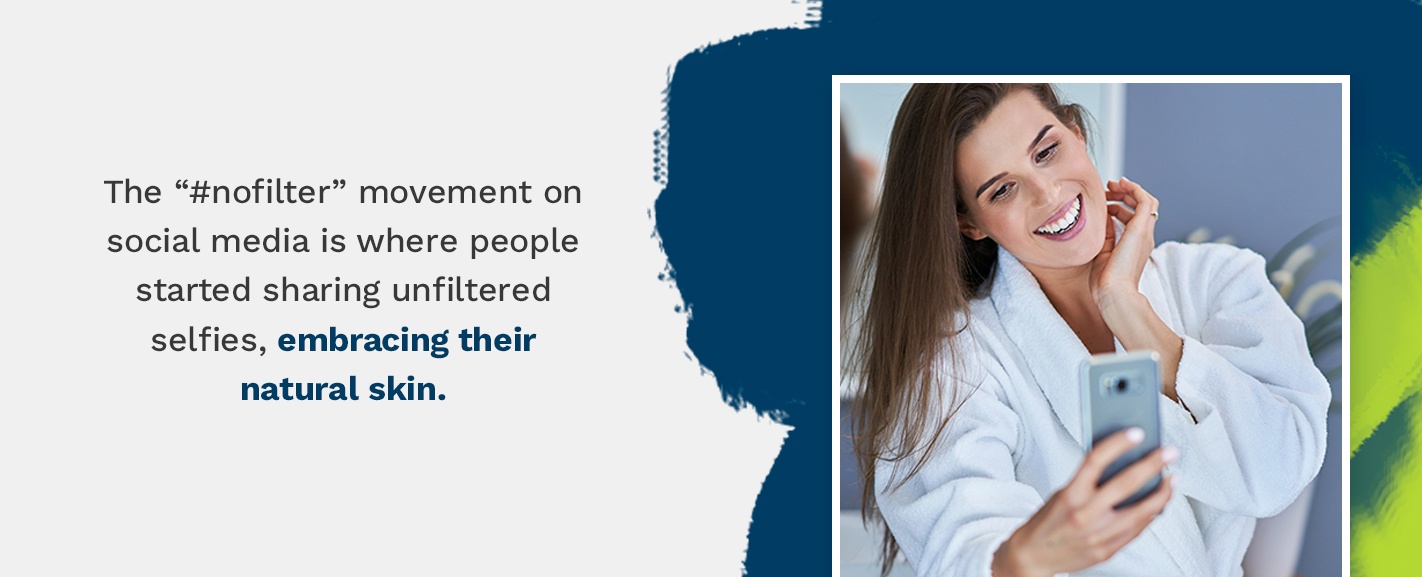
So many people today live their lives online and your appearance can have its own online persona too. Various apps allow you to use augmented reality (AR) filters to modify your selfies. These filters blur away imperfections and discoloration to give the appearance of flawless, porcelain-like skin. Selfie filters have become a topic of interest among researchers as they study what effects they have on a user’s self-image due to the unnatural level of perfection they generate.
While this may create unrealistic expectations for people to live up to, it has also inspired many to find a skin care routine that will help them achieve this look naturally. It also sparked the “#nofilter” movement on social media where people started sharing unfiltered selfies, embracing their natural skin to combat the overwhelming number of seemingly perfect photos that were in fact altered. While AR filters may not be a long-term solution in the skin care industry, they have certainly sparked conversations that emphasize the importance of self-care and are sure to influence the marketing and development of skin care technology moving forward.
Natural Skin Care Ingredients from Acme-Hardesty
No matter what trend you decide to follow, sourcing natural ingredients for your skin care products is a must in today’s market. Skincare products are only as effective as the ingredients in them. Our bio-based products are sustainable and renewable to provide you with ingredients that are good for you and good for the environment, too.
Our catalog of products includes ingredients used in personal care and cosmetics. Our fatty acids can be used as thickening agents and emollients or combined with glycerine to create a cleansing agent, and fatty alcohols serve as emulsifiers, surfactants, thickeners and emollients. Contact Acme-Hardesty for more information on using natural ingredients in your skin care products.
